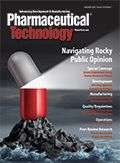Pharma Regulation to be Shaped by Pricing and Production Issues
Pressures on FDA will affect industry’s success in bringing new therapies to market.
While biopharma companies can anticipate continued success in discovering new gene and cellular therapies and in devising innovative treatments for multiple serious conditions, a range of issues are poised to shape R&D and regulatory policies in early 2020. Politicians on all sides will continue to hammer drug prices, prompting industry to emphasize the importance of maintaining strong investment in R&D. FDA will remain embroiled in addressing a number of high-profile public health issues, as well as drug shortages and complex drug development initiatives.
With national elections looming in November 2020, and a host of Democrats seeking to regain the White House, health policy and pharmaceutical costs will remain leading issues for all candidates. The future of the Obama Administration’s Affordable Care Act hangs in the balance, with the debate poised to shape federal and state drug coverage and reimbursement as part of initiatives to lower outlays for medicines. Industry will challenge legislation authorizing drug importing or international reference pricing as a threat to continued innovation, but the full ramifications of election-year politicking remain to be seen.
Important challenges await FDA’s new commissioner, Stephen Hahn, most notably ongoing efforts to address the nation’s devastating opioid epidemic and to halt teen vaping of e-cigarettes, which has been linked to dozens of deaths. There’s pressure on the agency to clarify its rules for cannabidiol products, particularly dietary supplements promoting health benefits, and to address concerns about the rise in antibiotic resistance and lack of research on new treatments to combat infectious diseases. Delays in Congress approving the federal budget for the 2019 fiscal year will continue to create difficulties for the agency in assuring support for its many crucial food and drug programs.
In response to the public outcry over drug prices, FDA will continue to streamline and accelerate the approval of more generic drugs and biosimilars as alternatives to expensive brand therapies. However, most of the biosimilars approved so far have yet to reach the market due to complex patent issues as well as efforts by innovators to discourage acceptance of follow-on therapies by physicians and health plans. FDA will continue to oppose tactics to delay access to comparators needed to test generics and biosimilars, and some policy makers look to prevent brands from offering financial incentives to health plans and pharmacy benefit managers (PBMs) to favor their products. But the issues are complex and will present challenges in bringing biosimilars and generics to patients.
Innovation and quality
FDA has worked to establish standards to support the development of innovative, life-saving cellular and gene therapies, as seen in the approval of several breakthrough products and industry programs to develop dozens more. Patient advocates will continue to provide important voices for shaping risk-benefit equations for promising therapies, while manufacturers will invest more in modern operations able to produce quality cutting-edge products more reliably and efficiently. All parties will be watching closely to detect any safety problems or signs of limited effectiveness that could raise concerns about the long-term value of a new treatment. The importance of reliable systems for producing safe and high-quality pharmaceuticals will remain in the spotlight as part of efforts to ensure access to needed medicines. Congressional leaders are concerned about continued shortages in a number of critical treatments, as well as increased reliance on drug ingredients imported from China, India, and other countries. FDA’s Office of Regulatory Affairs (ORA) is looking to implement more fully its pharmaceutical inspectorate process, which features highly trained professionals using templates to evaluate how well production systems and practices can ensure the regular production of quality products, and to support industry efforts to modernize operations and address problems expeditiously.
More guidance from FDA should help improve testing and production of needed treatments, particularly new cellular and gene therapies that raise tricky quality control challenges. FDA will continue to support global harmonization of standards for drug production and for preclinical and clinical testing, as seen in a range of agreements with other regulatory authorities. These involve sharing and accepting reports on plant inspections, on certain testing programs, and more recently on information in market applications to achieve simultaneous drug approval decisions by multiple authorities. A main theme for the coming year will be to reduce extraneous requirements and promote more streamlined, risk-based approaches to drug development and production around the world.
Congress may do more to support these and other R&D programs by advancing legislation to further initiatives authorized by the 21st Century Cures Act five years ago. This time, the legislators indicate an interest in promoting wider utilization of digital health technologies to improve access to new products and health services; in modernizing coverage policies for innovative, life-saving drugs; and in utilizing real-world evidence more broadly in drug development.
Article Details
Pharmaceutical Technology
Vol. 44, No. 1
January 2020
Page: 14
Citation
When referring to this article, please cite it as J. Wechsler, "Pharma Regulation to be Shaped by Pricing and Production Issues," Pharmaceutical Technology 44 (1) 2020.
